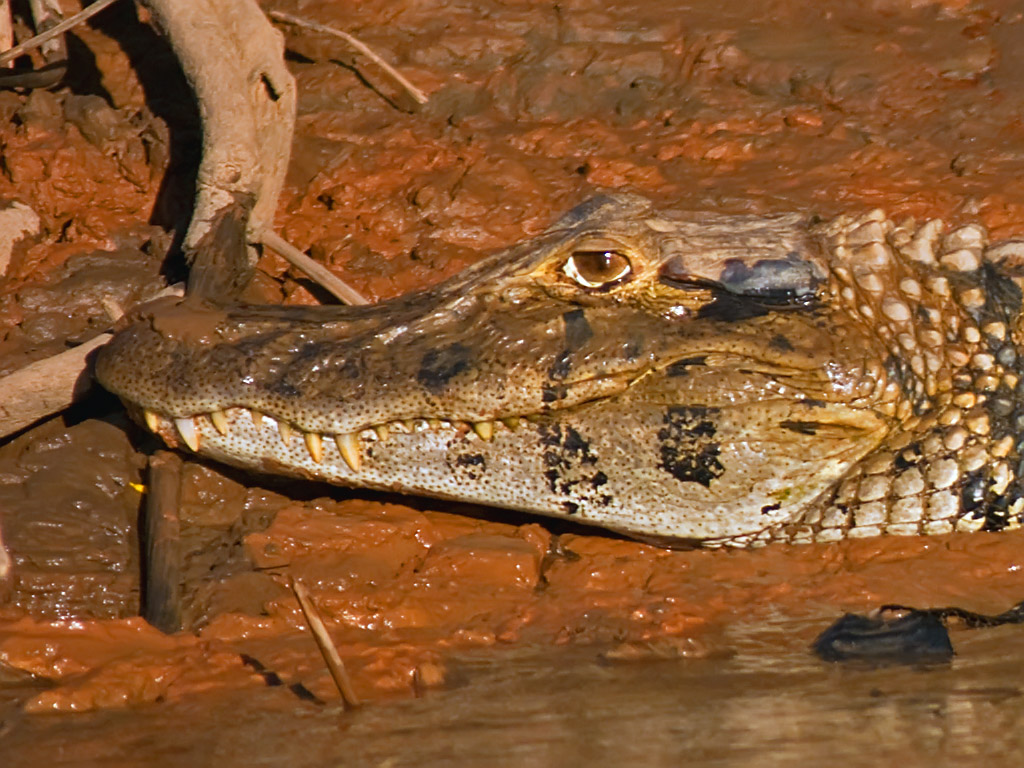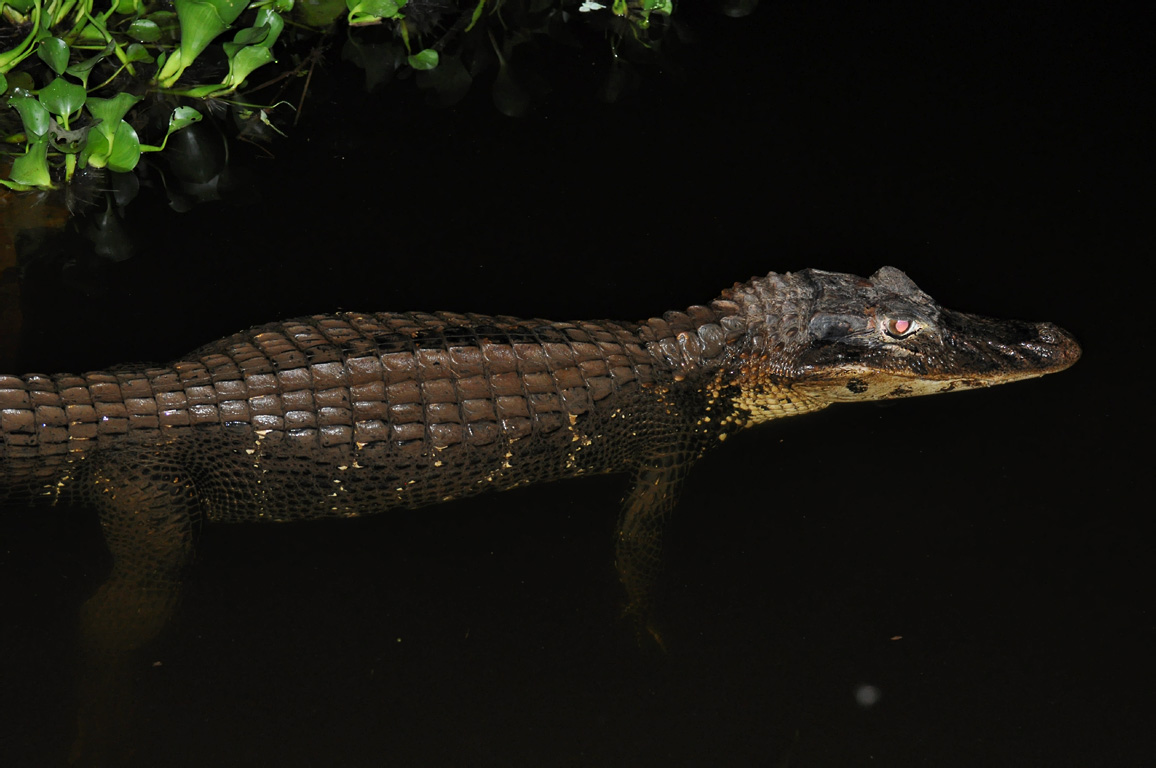General information
- Genus: Melanosuchus
- Species: Niger
- Alternative names: Caiman Niger
- Average length: At least 4 m (13 ft.)
- Adult weight: Around 300 kg (660 lb.)
- Diet: Fish (such as catfish and piranhas), capybara, turtles, birds, otters and deer. Juveniles eat crustaceans and invertebrates such as snails and smaller fish.
- Natural predators: None as adults. As babies and juveniles, snakes such as the anaconda, jaguars and bigger caimans. Many predators hunt their eggs.
- Life span in the wild: Unknown
- Clutch size: 30 to 65 eggs (50 to 60 normally)
- Natural habitat: Shallow freshwater habitats such as slow-moving rivers, streams and oxbow lakes, and flooded savannah and wetlands.
- Geographical range: Amazon rainforest from Ecuador to French Guiana and from Brazil and Colombia to Bolivia
Interesting Black Caiman facts
- The Black Caiman is the largest predator in the Amazon rainforest and as adults, can potentially take on any other animal in the rainforest, including other predators.
- It is the largest member of the Alligatoridae family which includes alligators and caimans. Caimans are endemic to Central and South America; alligators to the United States and China.
- There are six species of caimans and four of these occur in the Tambopata rainforest, south-east Peru. The most often seen here are the Black Caiman and the smaller and lighter-coloured Spectacled Caiman.
- At night, their eyes shine red.
- They have 72-76 teeth!
- There is an untrue myth that crocodilians such as the Black Caiman eat their own young – this is caused by a misunderstanding of when they move their hatchlings from the nest in their mouths to take them to a safer location.
- The Black Caiman has made a comeback in its conservation status after becoming close to extinction because of a peak in commercial hunting in the 1950s – 1970s for its skin which produces a shiny black leather.
IUCN conservation assessment
- Estimated world population: Unknown
- Conservation status: Least Concern
- Population trend: Unknown
Sources
- Ross, J.P. 2000. Melanosuchus niger. In: IUCN 2012. IUCN Red List of Threatened Species . Version 2012.2. Downloaded on 07 May 2013.

Black Caiman

Black Caiman at night
